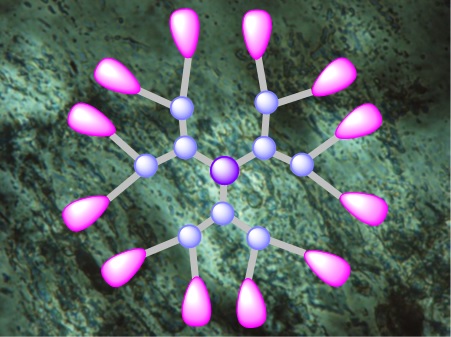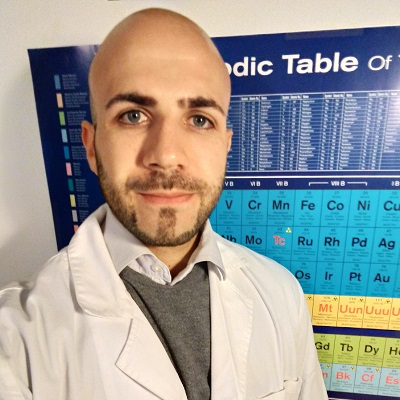ESR13 Project
Specifically functionalized dendrimers for catalysis in special media
Recruting institution: UAB
Diploma-delivering institutions: UAB, UPS
Thesis co-directors: Rosa Maria Sebastián (UAB, Barcelona, ES), Anne-Marie Caminade (LCC, Toulouse, FR)
Secondment host: Henkel KGaA
Objectives
Our objectives are the use of dendrimers[1,2] monodisperse polymers, as a support of metal complexes and nanoparticles (NPs) to catalyse organic reactions in special media, such as supercritical CO2 and liquid crystalline media, being easy possible their recovering and reused.[3] The introduction of specific (macrocyclic) ligands with long perfluorinated chains in their surface will increase the solubility in supercritical CO2 and allow liquid crystalline materials to be obtained. [4] Their complexation will afford catalysts that will enable us to test the selectivity in ordered media. The complexation of different metals and stabilization of metal NPs will also be done.[5, 6]
[1] A. M. Caminade, C. O. Turrin, R. Laurent, A. Ouali, B. Delavaux-Nicot in Dendrimers: Towards Catalytic, Material and Biomedical Uses, Wiley-VCH, Chistester, 2011.
[2] A. M. Caminade, A. Ouali, R. Laurent, C. O. Turrin, J. P. Majoral, Chem. Soc. Rev.2015, 44, 3890-3899.
[3] A. Olmos, G. Asensio, P. J. Pérez ACS Catal. 2016, 6, 4265-4280.
[4] C. A. Hincapié, R. M. Sebastián, J. Barberá, J. L. Serrano, T. Sierra, J. P. Majoral, A.-M. Caminade Chem. Eur. J.,2014, 20, 17047-17058.
[5] R. Soler, E. Badetti, M. Moreno-Mañas, A. Vallribera, R.M. Sebastián, P. Vera, J.L. Serrano, T. Sierra Liquid Crystal 2007, 34, 235-240.
[6] E. Badetti, A.M. Caminade, J.P. Majoral, M. Moreno-Mañas, R.M. Sebastián Langmuir 2008, 24, 2090-2101.
Expected Results
The ESR will obtain a new family of dendritic macromolecules containing polyfluorinated ligands[5] in their structure (1st, 2nd and 4th generation). The derived complexes and NPs stabilized materials (Pd, Pt, Au) will be active as catalysts for many organic reactions in supercritical CO2 sustainable media, being recovered and reused for at least 10 times. Their anchorage to silica or magnetic particles will improve recovering in supercritical conditions, being possible reactions in continuous flow. Metal leaching should be reduced (<1 ppm). Interesting effects in the selectivity of catalysts working in ordered liquid crystalline media are also envisaged (at least 95% ee).
[5] R. Soler, E. Badetti, M. Moreno-Mañas, A. Vallribera, R.M. Sebastián, P. Vera, J.L. Serrano, T. Sierra Liquid Crystal 2007, 34, 235-240.


Massimo Petriccone
PhD student - ESR 13
My name is Massimo Petriccone, I’m from Italy, I obtained my Master’s degree in Chemistry at the University of L’Aquila in 2018. There I had the first approach on research during my Bachelor’s degree thesis, in the field of Material Sciences, working on thin films of thermochromic material. During my Master’s degree thesis I worked on a research project based on sequential reactions of β-(2-aminophenyl)-α,β-ynons with isocyanates in the laboratory of Professor Antonio Arcadi.
Under the CCIMC network, my project will touch many fields of chemistry, starting from the Organic Synthesis of dendrimers, passing through the Macromolecular Coordination and touching at the end the Catalysis in sustainable media like supercritical CO2 and water.
